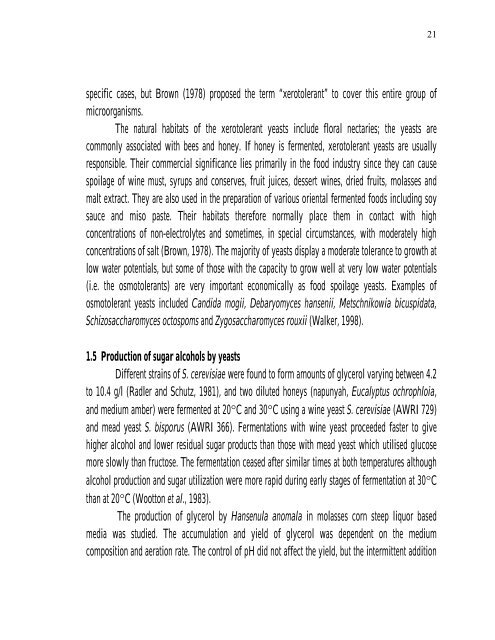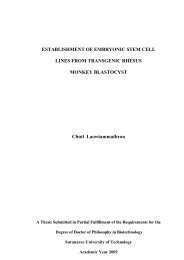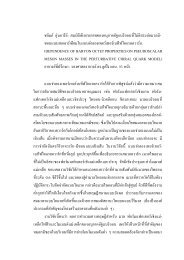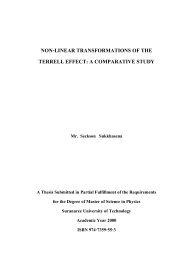PRODUCTION Of NUTRIENT SOURCES FOR RHIZOBIUM
PRODUCTION Of NUTRIENT SOURCES FOR RHIZOBIUM
PRODUCTION Of NUTRIENT SOURCES FOR RHIZOBIUM
You also want an ePaper? Increase the reach of your titles
YUMPU automatically turns print PDFs into web optimized ePapers that Google loves.
specific cases, but Brown (1978) proposed the term “xerotolerant” to cover this entire group of<br />
microorganisms.<br />
The natural habitats of the xerotolerant yeasts include floral nectaries; the yeasts are<br />
commonly associated with bees and honey. If honey is fermented, xerotolerant yeasts are usually<br />
responsible. Their commercial significance lies primarily in the food industry since they can cause<br />
spoilage of wine must, syrups and conserves, fruit juices, dessert wines, dried fruits, molasses and<br />
malt extract. They are also used in the preparation of various oriental fermented foods including soy<br />
sauce and miso paste. Their habitats therefore normally place them in contact with high<br />
concentrations of non-electrolytes and sometimes, in special circumstances, with moderately high<br />
concentrations of salt (Brown, 1978). The majority of yeasts display a moderate tolerance to growth at<br />
low water potentials, but some of those with the capacity to grow well at very low water potentials<br />
(i.e. the osmotolerants) are very important economically as food spoilage yeasts. Examples of<br />
osmotolerant yeasts included Candida mogii, Debaryomyces hansenii, Metschnikowia bicuspidata,<br />
Schizosaccharomyces octospoms and Zygosaccharomyces rouxii (Walker, 1998).<br />
1.5 Production of sugar alcohols by yeasts<br />
Different strains of S. cerevisiae were found to form amounts of glycerol varying between 4.2<br />
to 10.4 g/l (Radler and Schutz, 1981), and two diluted honeys (napunyah, Eucalyptus ochrophloia,<br />
and medium amber) were fermented at 20°C and 30°C using a wine yeast S. cerevisiae (AWRI 729)<br />
and mead yeast S. bisporus (AWRI 366). Fermentations with wine yeast proceeded faster to give<br />
higher alcohol and lower residual sugar products than those with mead yeast which utilised glucose<br />
more slowly than fructose. The fermentation ceased after similar times at both temperatures although<br />
alcohol production and sugar utilization were more rapid during early stages of fermentation at 30°C<br />
than at 20°C (Wootton et al., 1983).<br />
The production of glycerol by Hansenula anomala in molasses corn steep liquor based<br />
media was studied. The accumulation and yield of glycerol was dependent on the medium<br />
composition and aeration rate. The control of pH did not affect the yield, but the intermittent addition<br />
��






